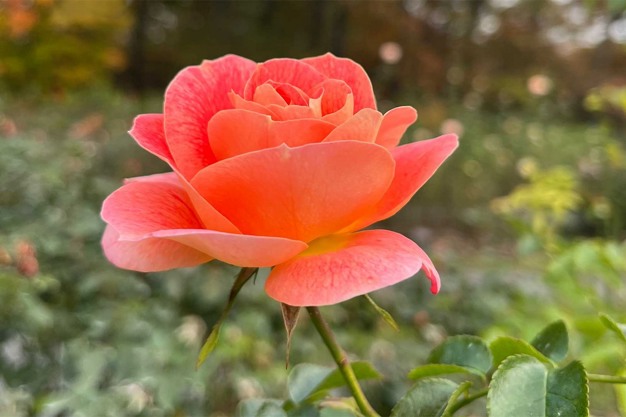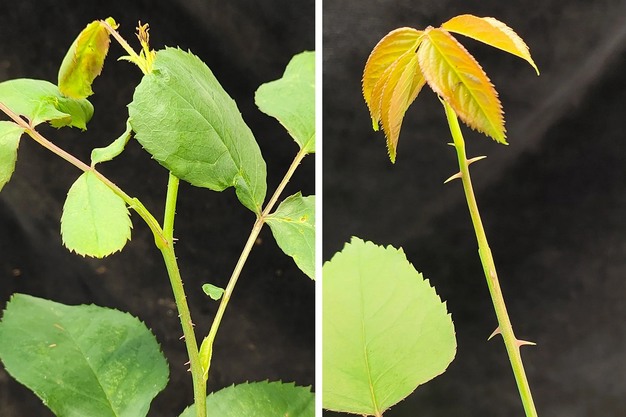[ad_1]
In line with Greek mythology, crimson roses first appeared when Aphrodite pricked her foot on a thorn, spilling blood on a white rose. Since then, roses’ thorns have captured the imaginations of numerous poets and forlorn lovers.
However they don’t seem to be the one crops with these harmful protrusions, technically known as prickles. Prickles have developed independently in species throughout the plant kingdom. Their important operate: heading off herbivores. They’re even current in sure eggplant and rice crops. But, for years, it has been unclear how the trait pops up so continuously in such unrelated species.
Now, in a breakthrough discovery, Chilly Spring Harbor Laboratory (CSHL) has discovered that the identical historical gene household is liable for prickles throughout many crops, regardless of hundreds of thousands of years of evolutionary separation.
CSHL postdoc James Satterlee was impressed to analyze prickles upon touring a discipline the place his advisor, Professor & HHMI Investigator Zachary Lippman, grows a whole bunch of nightshades. Assume tomatoes, potatoes, and eggplants. Satterlee remembers:
“I seen many had very distinguished prickles. So, I requested, ‘What can we find out about that? What is going on on with this adaptation?’ It seems we knew nearly nothing.”

With scientists in Spain, Satterlee started analyzing eggplants, which led him to a gene household known as LONELY GUY (LOG). LOG genes are usually liable for making a hormone that causes cell division and growth. Satterlee found that sure LOG mutations additionally get rid of prickles in eggplants. Lippman and Satterlee questioned: Might LOG-related genes be liable for prickle good points and losses throughout a number of crops over hundreds of thousands of years?
The workforce began combing by prior research and contacting collaborators across the globe. Satterlee and Lippman labored with the New York Botanical Backyard to look at specimens with and with out prickles. Collaborators at Cornell College used genome modifying to get rid of prickles in desert raisins, a foraged berry native to Australia. One other colleague in France suppressed prickles in roses. In whole, the workforce got here to affiliate prickles with LOG-related genes in about 20 species.
Lippman says whereas this discovery could possibly be used to engineer crops with out prickles, it additionally has large implications for understanding convergent evolution in all life. That’s, how utterly completely different species independently develop related traits. He explains:
“You are actually asking about life generally—evolution of traits. How do they emerge? How are they modified? What are the underlying mechanisms? What can we find out about issues we take with no consideration?”

The reply may sometime make lesser-known species like desert raisins a brand new fruit in supermarkets. On the very least, it ought to make life simpler for horticulturalists plucking roses’ pesky thorns.
Supply: cshl.edu
[ad_2]


